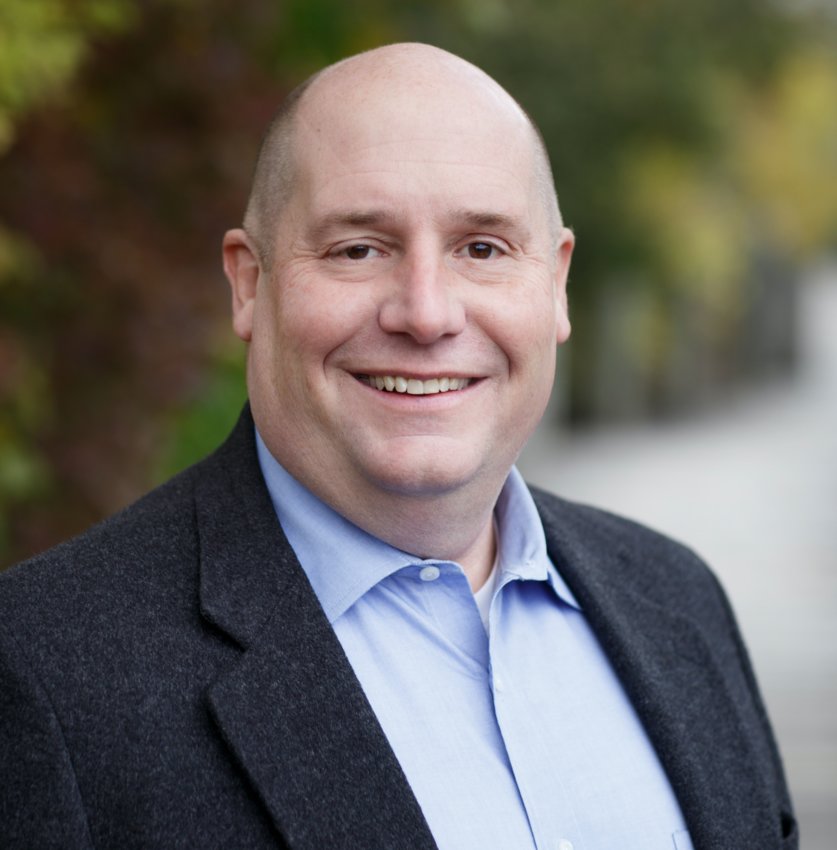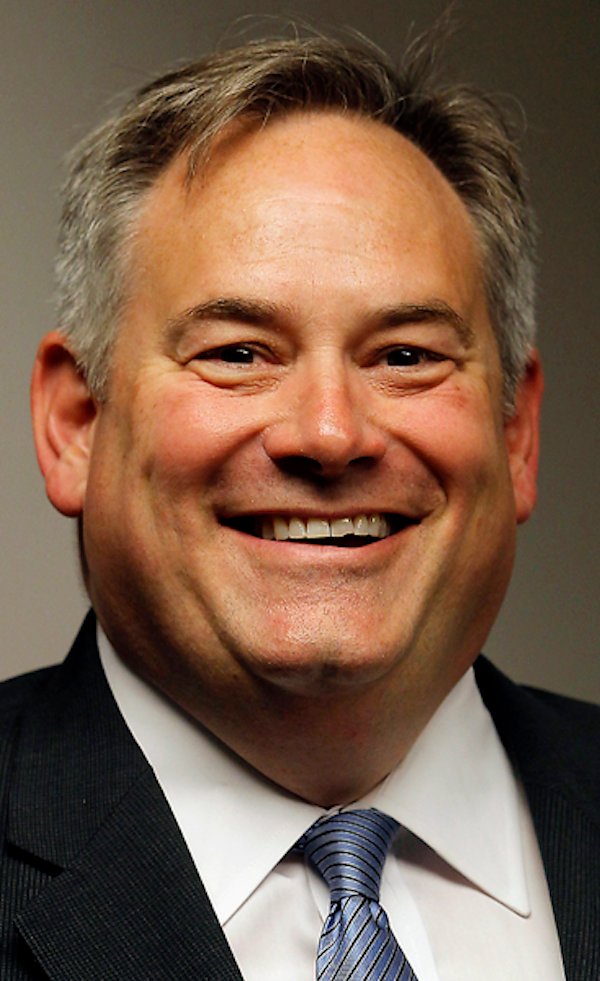Report for America’s community news funds

[ad_1]
Bob Sillick | for Editor & Publisher
In every community, there are believers who understand the importance of local media, especially the newspaper, which has been the traditional and vital source of information. These believers want to support its journalism and enhance its value. Initially, there are few of these believers, but some are also influential. The mission of the Report for America’s Community News Funds (CNF) program is to help communities, their local philanthropic resources and news media identify these believers and increase their ranks to create permanent funding to sustain good journalism.
“We recognize these believers as those who can connect the dots back to local media,” Todd Franko, director of local sustainability and development at Report for America (RFA), said. “More local newsrooms understand they need multiple revenue streams, and the Community News Funds program helps them act.
“We’re building on the yearslong philanthropic support of journalism by encouraging local newsrooms, foundations and other funding sources to evolve their mindset that newspapers are more than commercial operations. They are as much an institution as their communities’ public library or museum and deserve not only to survive but also expand their coverage.”
The CNF concept is a natural extension of RFA’s mission to recruit and fund emerging journalists for newsrooms that want to increase their coverage of often under-reported communities and issues. Its journalism corps now includes 300 journalists (almost half of them are journalists of color, and two-thirds are women) working in 217 newsrooms in all 50 states, Washington, D.C., Puerto Rico and Guam. (See the August 2022 issue of Editor & Publisher for more details.)
True believers in Michigan
Nate Payne, the former executive editor of the Traverse City (Michigan) Record-Eagle, was one of those early believers in philanthropic support of journalism. He found Paul Heidbreder, his publisher, was also a believer. They applied to RFA to find and fund a data reporter to analyze local and state data for relevant story ideas. When the data reporter left, the paper applied to the RFA a second time and now has a dedicated journalist reporting on the indigenous community. The Record-Eagle has refilled the data reporter position via RFA and now has two RFA journalism corps members on the roster.
RFA funds 50% of an emerging journalist’s salary when placed in a newsroom. The news organization contributes 25%, and the other 25% comes from local philanthropic sources. Payne and Heidbreder approached the Grand Traverse Regional Community Foundation in search of the philanthropic share. That was the catalyst for creating a CNF in the region.
“The RFA journalists corps was new to me, but Nate shared my passion for very good local journalism and convinced me we should participate,” Heidbreder said. “I am very encouraged by the many young journalists who share our passion and the opportunities RFA has offered them.”

Steve Wade, vice president of community impact, Grand Traverse (Michigan) Regional Community Foundation
Dave Mengebier, executive director of the foundation, and Steve Wade, vice president of community impact, were also believers. Collectively, they realized there was an opportunity to create a long-term relationship to support the Record-Eagle. It was also clear to them that careful planning was needed to educate a much broader segment of community leaders and funding partners and transform them into believers, too.
The 18-month process they determined was necessary to sell the CNF concept started with a Case for Support, a comprehensive document explaining the concept, its value and the funding mechanism.
“From the foundation’s perspective, a CNF required broad support from our board and the community. We contacted community leaders and funders to become partners, and several wanted to participate, and others were not interested,” Wade said.
“Our job was to help them understand the concept and explain why it was important to support a for-profit organization with community funds. Traditionally, donors want to see an ROI for their contributions, that the food bank can support more families in need or the homeless are receiving adequate healthcare.”
Heidbreder explained that small donations were the bulk of the early funds raised, and the process of educating community leaders and major donors is proceeding in the right direction, but more work is needed. To date, $50,000 of a $300,000 three-year goal has been raised since December 2021.
Creating a unique community-newspaper relationship in Spokane

Rob Curley, editor of The Spokesman-Review (Spokane, Washington)
Much like Payne in Michigan, the idea of philanthropic/community support of local journalism started to germinate in the mind of Rob Curley, currently the editor of The Spokesman-Review (Spokane, Washington), while he was still the editor at the Orange County (California) Register.
When the Register was purchased, Curley moved to The Spokesman-Review because he recognized its publisher was the right fit for the concept. He developed a unique approach, however. He utilized the RFA’s journalism corps program first to hire a rural health reporter. Spokane is a major regional healthcare center and has the only medical school preparing rural physicians.
The newspaper, however, had already created a philanthropic-supported position long before its first RFA reporter. Key to the newspaper’s fundraising and community outreach strategies is its popular Northwest Passages book club events, which can often draw more than 700 people.
Once the newspaper began to receive funding through its book club, it used the money to hire a full-time events coordinator. Curley said that would move the event responsibilities from an already over-burdened newsroom, and the events could continue to raise more money for the newspaper’s journalism.
“Local leaders and funding sources understood the concept but weren’t sure if it would work in Spokane. The RFA funding grants for the rural health reporter and events coordinator were important, but RFA’s credibility was the convincing factor,” Curley said.
According to Curley, the events coordinator organizes and manages two monthly newspaper-hosted events. He sees creating community involvement with a calendar of events as more valuable than being another revenue stream. Approximately 80% of the events are discussions/presentations from authors and speakers on a variety of topics, such as politics, local sports and a celebration of local African American arts. The event topics were also chosen based on readers’ online information searches instead of the traditional editorial choices of the newspaper.
“We thought free admission to our events would attract a significant audience, but often half of the ticketholders didn’t attend. We then started to charge for tickets, currently at $7, and almost every event was at 90%+ capacity,” said Curley.
Curley added that a reasonable ticket price helped to create an audience with diverse opinions, driving more interest in the events. After one event, an audience member approached the staff and asked questions about their mission and, within a few days, donated $25,000. That donation was used to acquire a stage and better lighting to improve the events.
An essential element of Curley’s plan was using a creative content license, so the community owned the content it funded, not the newspaper. As a result, the RFA’s corps journalists’ stories are free and not secured behind a paywall. Readers have been a source of substantial funding with many small donations as well as annual donations of $5,000 or more from subscribers.
“As funding and donations have increased, we’ve hired a racial equality reporter. The African American community in Spokane is small and has a monthly newspaper, Black Lens News. We proposed to the publisher that we exchange some of our stories for inclusion in both papers, and we now dedicate two pages at least every quarter to stories from Black Lens News,” Curley said.
The Innovia Foundation and the Smith-Barbieri Foundation in Spokane are the funding partners of The Spokesman-Review. According to Curley, a very workable strategy was using these foundations for a pass-through fund. Creating a new non-profit would have been time-consuming and fraught with many regulations and oversight.
Launching a CNF in your community
RFA’s Community News Funds have been successful for many newspapers and their communities. The Traverse City Record-Eagle and The Spokesman-Review followed unique paths from concept to funding based on their needs and the structure of local philanthropy.
Payne and Heidbreder at the Record-Eagle created an 18-month plan when they and the Grand Traverse Regional Community Foundation realized local funding sources required a comprehensive document (Case for Support) and a thorough education of the concept.
Although Curley had hired an RFA journalism corps member initially, he decided he and his publisher could create a “community news fund” of their own to support journalists covering new beats and an events program to gain more exposure for the newspaper and generate donations from multiple sources. The money from The Spokesman-Review’s “community news fund” was even used to send a local reporter to Ukraine.
The RFA’s 2022 Community News Funds report offers more detailed information about how to start a fund and selected newspapers’ experiences. Newspapers may prioritize new funding to add journalists, but most don’t have any fundraising experience. Collaborating with a local foundation or other philanthropic sources is crucial to learning how to manage a fundraising campaign.
The report, which was developed by Mike Lupo, formerly of The Atlanta Journal-Constitution, includes a list of topics for discussion during an initial meeting/presentation with a local foundation. These include data about the newsroom; how the newspaper is already engaging with the community; its success at reporting on critical local issues; its efforts to promote diversity, equity and inclusion; and how it promotes democracy and combats misinformation.
Despite CNF programs’ success, newspapers have faced various challenges, many of which are common. Among these are the capacity of the community to fund and support local newsrooms permanently, maintaining editorial independence, concerns about funding a for-profit organization and how to measure return on investment.
Newspapers and communities and their philanthropic bodies have made progress with a CNF during the first three years of this RFA program. It continues to support these existing efforts and those newspapers and communities that want to start a CNF. It is a concept with a much broader mission than saving newspapers, although very important. It forges a new type of partnership to ensure local journalism’s long-term health and quality.
 Bob Sillick has held many senior positions and served a myriad of clients during his 47 years in marketing and advertising. He has been a freelance/contract content researcher, writer, editor and manager since 2010. He can be reached at bobsillick@gmail.com.
Bob Sillick has held many senior positions and served a myriad of clients during his 47 years in marketing and advertising. He has been a freelance/contract content researcher, writer, editor and manager since 2010. He can be reached at bobsillick@gmail.com.
[ad_2]
Source link

